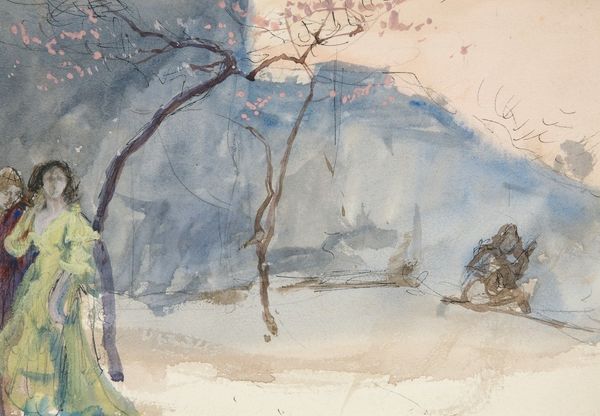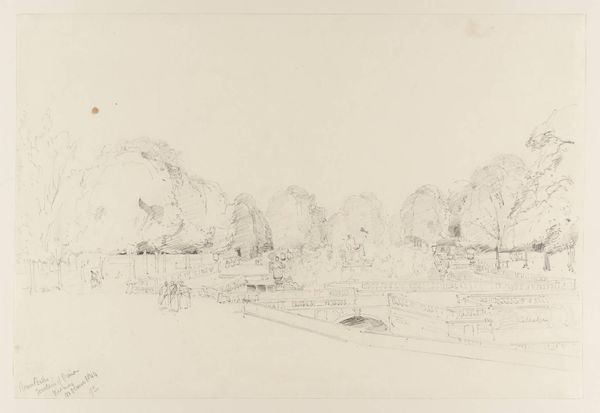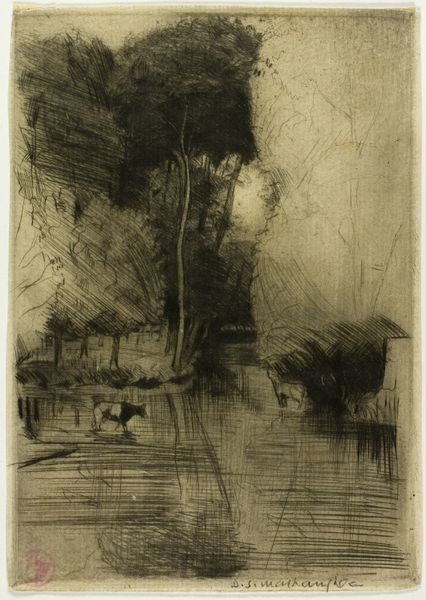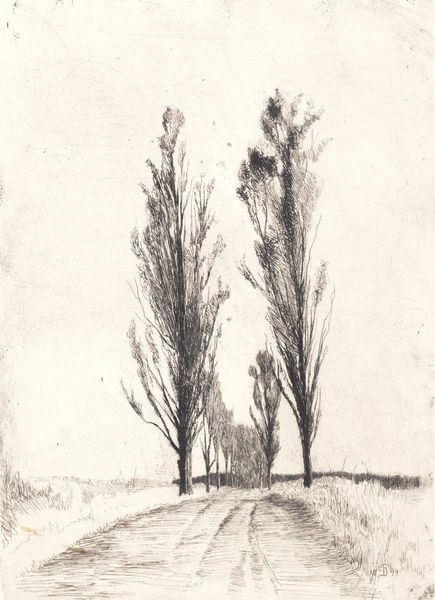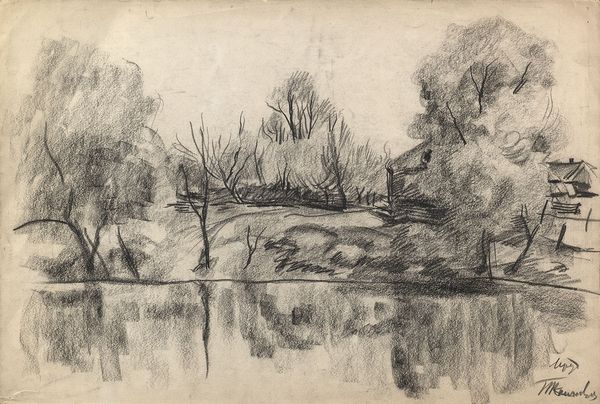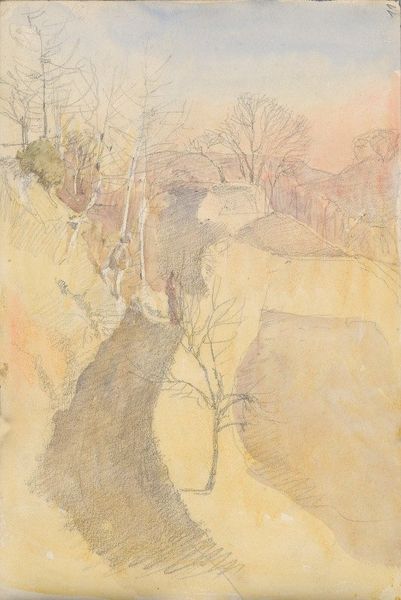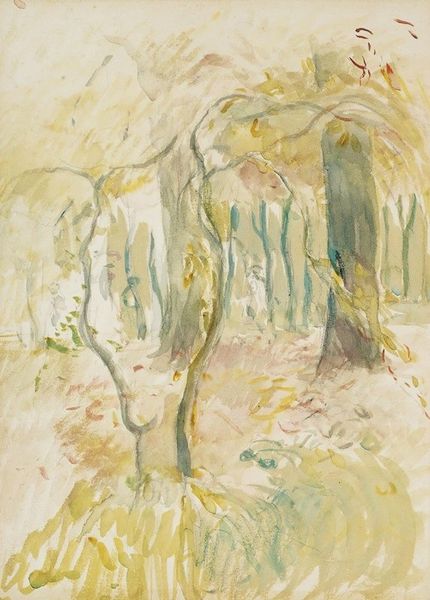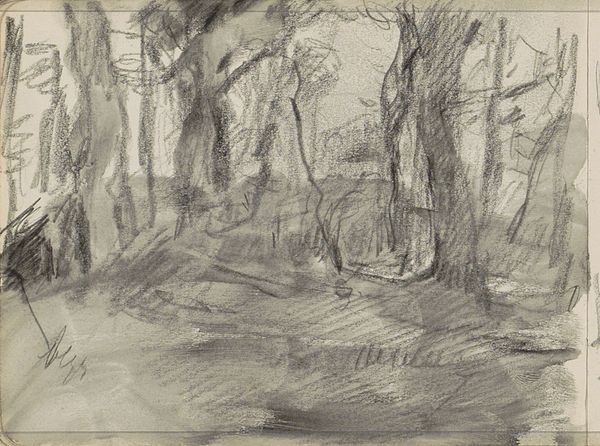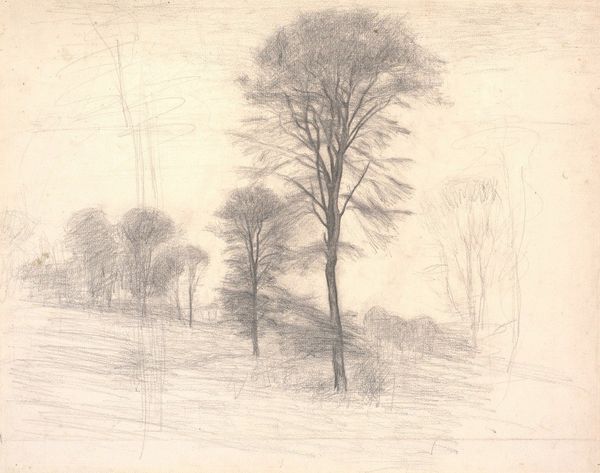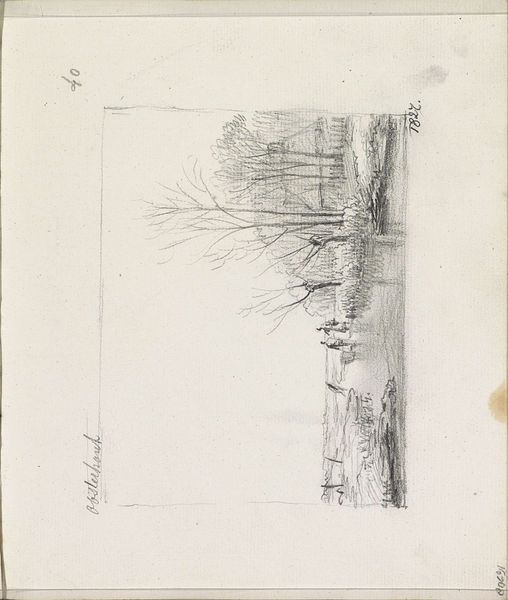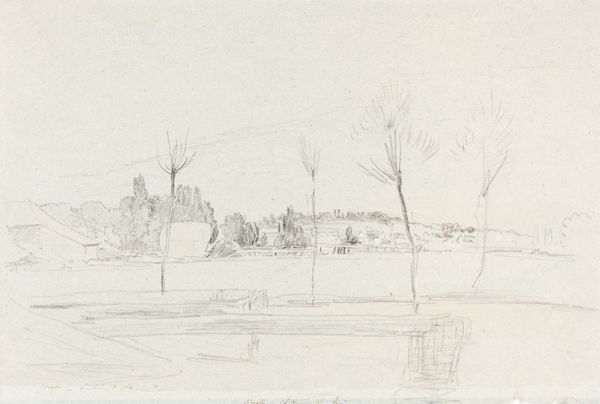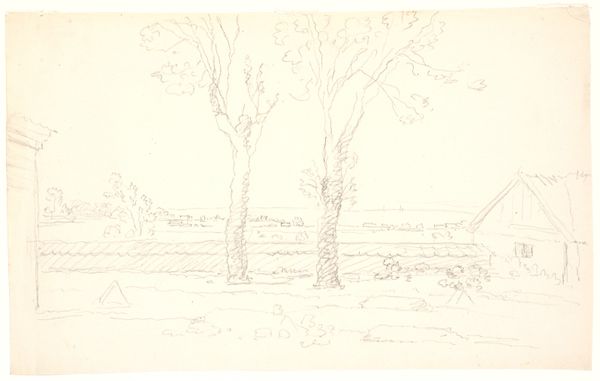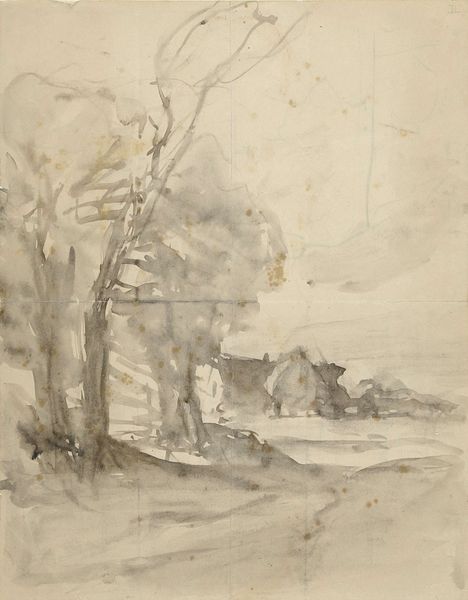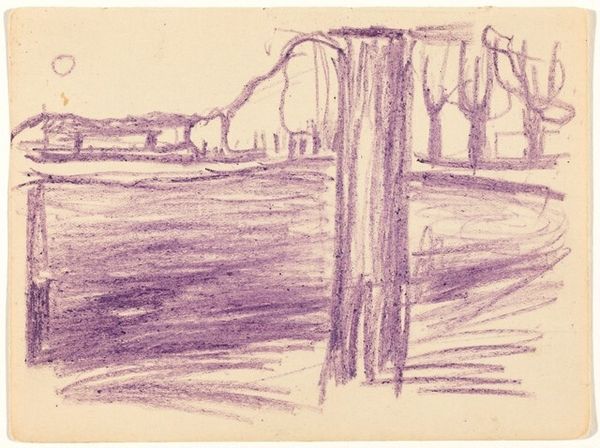
Copyright: Public Domain: Artvee
Curator: This is "Puistomaisema, luonnos," or "Park Landscape, sketch," a charcoal and pencil drawing by Magnus Enckell, created in 1891. Editor: The overall feeling is melancholic, maybe even a bit bleak. The sketchiness adds to the sense of transience and perhaps even a lack of definition in the scene. It seems a rather cold environment. Curator: That interpretation resonates with Enckell's wider body of work. We have to understand the context of the time: he was painting during a period of social and political upheaval in Finland. The sketch’s landscape can be read as reflecting the broader uncertainty and precarity many felt. Editor: The prominent trees immediately evoke, for me, a symbol of steadfastness, acting almost like silent witnesses. But those turbulent charcoal strokes used to render their leaves betray this supposed stability and invite a far more chaotic, frenzied reading. This is enhanced by their being almost personified by the artist. Curator: I find that connection between nature and national identity particularly strong at that time. The landscape in art became a key site for exploring themes of national identity and resistance against Russian imperialism. Think about the role nature played in resisting colonial power; how could the landscape offer refuge, resistance, and even sustenance? Enckell’s landscape sketches must be approached with such notions in mind. Editor: Yes, and I'm particularly intrigued by the dark line near the bottom—almost as if something lies hidden beneath the surface. Maybe there are turbulent emotions below what we consider a very plain scenery. I see some cyclical figures, maybe representing a vortex of emotional, historical elements all mixed together. It adds another layer of visual language to this compelling sketch. Curator: Absolutely. It's a seemingly simple landscape, but it reflects profound tensions related to identity, resistance, and the search for stability. Thank you for bringing those subconscious notions to the fore, this adds another exciting interpretive frame. Editor: It reminds us how an art piece becomes an evolving accumulation of culturally shaped images—with the capacity to become personally poignant!
Comments
No comments
Be the first to comment and join the conversation on the ultimate creative platform.
